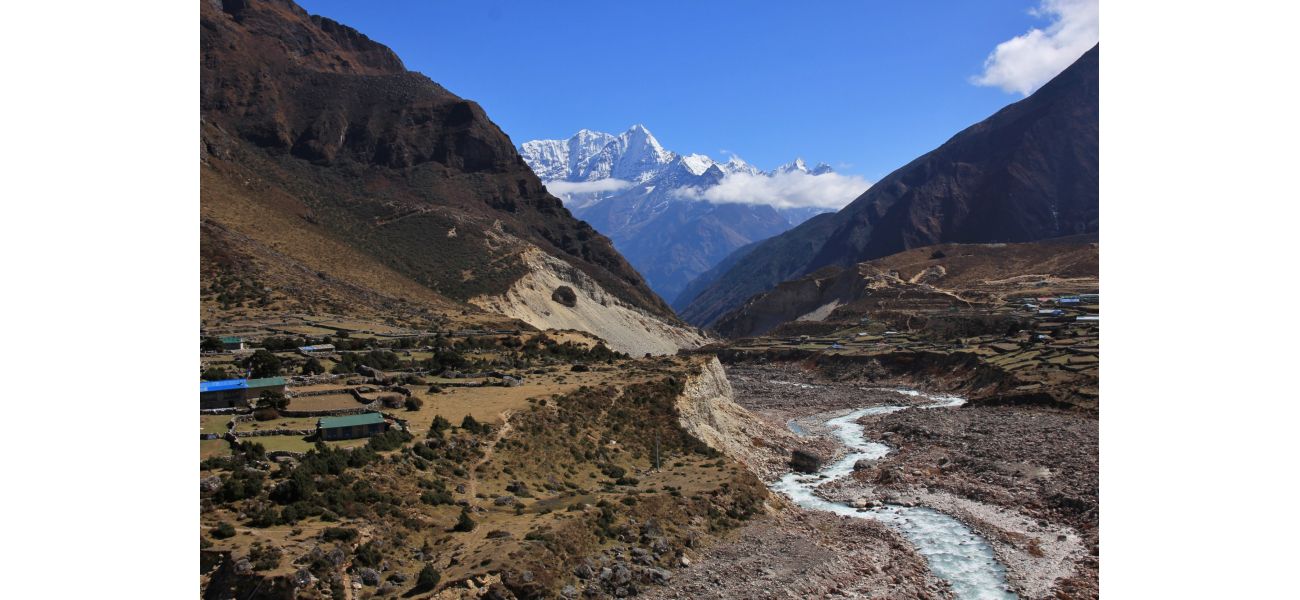Mount Everest has increased in height by 50 meters due to a specific cause.
A gradual growth spurt has taken place.
September 30th 2024.

The Kosi river has been a powerful force of erosion for thousands of years, shaping the landscape around it in astonishing ways. One of the most remarkable effects of this river's erosive power is the growth of Mount Everest, the tallest peak on Earth. It may be hard to believe, but this majestic mountain was once about 50 meters shorter than it is now. However, this growth has not been a sudden burst, but rather a gradual process that has taken place over thousands of years.
Recently, new research has shed light on the growth of Mount Everest. Scientists have discovered that in the last 85,000 years, the mountain has grown by up to 50 meters. This can be attributed to the nearby river network, which has been slowly carving into the land and pushing the peak of the mountain further upwards. In fact, the erosion from the river has caused Mount Everest to grow by about 2 millimeters every year. While this may not seem like a lot, it just goes to show how much our planet's surface can change over time.
Adam Smith, a PhD student at UCL Earth Sciences and co-author of the study, expressed his fascination with Mount Everest, calling it a "remarkable mountain of myth and legend." He also emphasized that this growth is ongoing, and Mount Everest is still growing taller. The team's research has shown that as the nearby river system continues to cut deeper into the landscape, the loss of material is causing the mountain to rise even higher.
The study, which was published in the journal Nature Geoscience, focused on the erosion rates of the Arun and Kosi rivers in the region. The researchers found that about 89,000 years ago, the Arun river joined and merged with the Kosi river network. This merger resulted in more water being funneled through the Kosi river, increasing its erosive power. As a result, more of the land was washed away, triggering a faster rate of uplift and causing the peaks of the mountains to rise.
Dr. Xu Han of China University of Geosciences, the lead author of the study, highlighted the dynamic nature of the Earth's surface, pointing out that the interaction between the erosion of the Arun river and the upward pressure of the Earth's mantle gives Mount Everest a boost, pushing it up higher than it would otherwise be.
At 8,849 meters tall, Mount Everest towers over its neighbors in the Himalayas mountain range in Nepal. It is about 250 meters taller than the second-tallest peak, making it quite the outlier. However, this can be explained by an uplifting force caused by pressure from below the Earth's crust. This pressure is greater than the downward force of gravity, causing a section of the Earth's crust to float upwards. Thus, Mount Everest stands tall as a result of the river's erosion and the Earth's natural processes.
Today, the Arun river runs to the east of Mount Everest and merges with the larger Kosi river system downstream. Over thousands of years, the Arun has carved out a massive gorge along its banks, eroding billions of tonnes of earth and sediment. Dr. Jin-Gen Dai of UCL Earth Sciences, another co-author of the study, explained that the unique topography of the region is likely related to Everest's extreme height, and is indicative of an unsteady state.
Interestingly, Mount Everest is not the only peak experiencing this growth spurt. Other peaks in the region, such as Lhotse and Makalu, are also benefiting from the river's erosion. Dr. Matthew Fox of UCL Earth Sciences, a co-author of the study, stated that Mount Everest and its neighboring peaks are growing because the isostatic rebound is raising them up faster than erosion is wearing them down. Using GPS instruments, scientists have been able to measure this growth at about 2 millimeters per year, and now they have a better understanding of the driving forces behind it.
Recently, new research has shed light on the growth of Mount Everest. Scientists have discovered that in the last 85,000 years, the mountain has grown by up to 50 meters. This can be attributed to the nearby river network, which has been slowly carving into the land and pushing the peak of the mountain further upwards. In fact, the erosion from the river has caused Mount Everest to grow by about 2 millimeters every year. While this may not seem like a lot, it just goes to show how much our planet's surface can change over time.
Adam Smith, a PhD student at UCL Earth Sciences and co-author of the study, expressed his fascination with Mount Everest, calling it a "remarkable mountain of myth and legend." He also emphasized that this growth is ongoing, and Mount Everest is still growing taller. The team's research has shown that as the nearby river system continues to cut deeper into the landscape, the loss of material is causing the mountain to rise even higher.
The study, which was published in the journal Nature Geoscience, focused on the erosion rates of the Arun and Kosi rivers in the region. The researchers found that about 89,000 years ago, the Arun river joined and merged with the Kosi river network. This merger resulted in more water being funneled through the Kosi river, increasing its erosive power. As a result, more of the land was washed away, triggering a faster rate of uplift and causing the peaks of the mountains to rise.
Dr. Xu Han of China University of Geosciences, the lead author of the study, highlighted the dynamic nature of the Earth's surface, pointing out that the interaction between the erosion of the Arun river and the upward pressure of the Earth's mantle gives Mount Everest a boost, pushing it up higher than it would otherwise be.
At 8,849 meters tall, Mount Everest towers over its neighbors in the Himalayas mountain range in Nepal. It is about 250 meters taller than the second-tallest peak, making it quite the outlier. However, this can be explained by an uplifting force caused by pressure from below the Earth's crust. This pressure is greater than the downward force of gravity, causing a section of the Earth's crust to float upwards. Thus, Mount Everest stands tall as a result of the river's erosion and the Earth's natural processes.
Today, the Arun river runs to the east of Mount Everest and merges with the larger Kosi river system downstream. Over thousands of years, the Arun has carved out a massive gorge along its banks, eroding billions of tonnes of earth and sediment. Dr. Jin-Gen Dai of UCL Earth Sciences, another co-author of the study, explained that the unique topography of the region is likely related to Everest's extreme height, and is indicative of an unsteady state.
Interestingly, Mount Everest is not the only peak experiencing this growth spurt. Other peaks in the region, such as Lhotse and Makalu, are also benefiting from the river's erosion. Dr. Matthew Fox of UCL Earth Sciences, a co-author of the study, stated that Mount Everest and its neighboring peaks are growing because the isostatic rebound is raising them up faster than erosion is wearing them down. Using GPS instruments, scientists have been able to measure this growth at about 2 millimeters per year, and now they have a better understanding of the driving forces behind it.
[This article has been trending online recently and has been generated with AI. Your feed is customized.]
[Generative AI is experimental.]
0
0
Submit Comment





